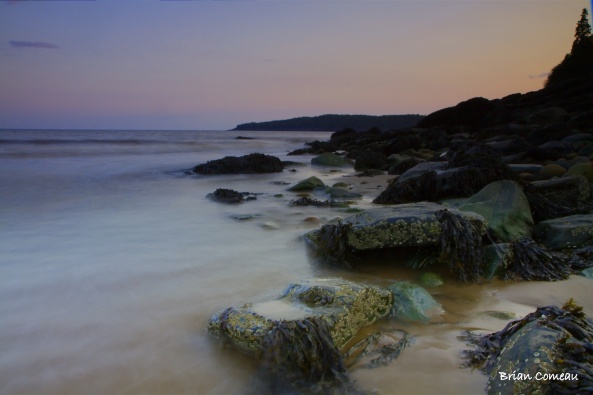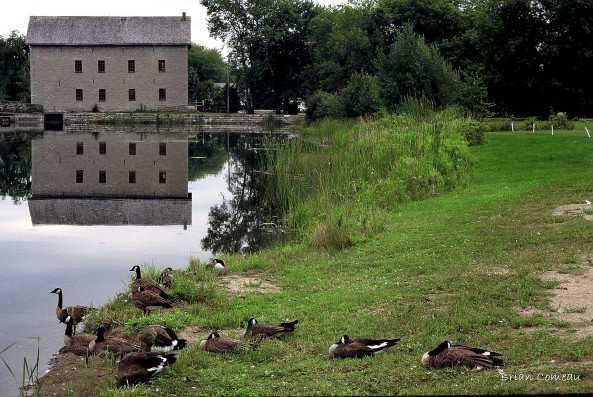Most photographers have a favourite subject. For some it’s portraits, others flowers and for some it’s landscapes. Water, especially the ocean has become the magnetic attraction for me. I’m fascinated by the way the ocean shapes the coastline, the sound of the waves and how a sunrise reflects off it. There is something peaceful, yet so powerful and at the same time fragile about water.
Today, April 22nd is Earth Day. As I’ve thought about the day and what it means, I started thinking over the decisions I make everyday and what else I can do to help with the issues we are dealing with. I won’t get into the debate of whether climate change is real, however there are other challenges relating to the environment that are undeniable. Being concerned about the environment isn’t just about climate change, the trees in rain forest or wildlife it’s also about people. As important as the issues in the Amazon and the loss of wildlife habitat are, the challenges with respect to water are just as great, if not greater.
Some statistics to consider….
Over 1.5 billion people do not have access to clean, safe water.
Almost 4 million people die each year from water related diseases.
The average toilet uses 6-8 litres of clean water in a single flush.
At any one time, more than half the world’s poor are ill due to inadequate sanitation, water or hygiene.
It takes over 11,000 litres of water to produce a pound of coffee.
Half the world’s schools do not have access to clean water, nor adequate sanitation.
It takes about 300 litres of water to make the paper for just one Sunday newspaper.
Agriculture is responsible for about 70% of the world’s water usage. Industry uses a further 22%.
443 million school days are lost each year due to water related illness.
On average, women in Africa and Asia have to walk 3.7 miles to collect water.
It takes up to 5000 litres of water to produce 1kg of rice.
80% of all illness in the developing world comes from water born diseases.
Drilling a fresh water well can cost anything from a few hundred dollars to over $40,000.
Over 2.6 billion people lack access to adequate sanitation.
90% of waste-water in developing countries is discharged into rivers or streams without any treatment.
About 1.8 million child deaths a year are due to diarrhea.
An 18 litre can of water weighs 20 kilos.
About half the world’s hospital beds are occupied by someone with a water related illness.
A five minute shower in an American household will use more water than a person living in a developing world slum will use in a whole day.
A third of the people without access to clean water live on less than a dollar a day. More than two thirds live on less than two dollars a day.
Water consumption in a US household is eight times that of an Indian household.
In India alone, water born diseases cost the economy 73 million working days per year.
In sub-Saharan Africa a child’s chance of dying from diarrhea is over 500 times greater than in Europe.
Approximately 2.5 billion people lack access to appropriate sanitation facilities.
About 1.2 billion people have absolutely no access to a sanitation facility.
In a typical year in Africa 5–10 times the number of people die from diarrhea than from war.
Simply washing hands can decrease the chance of diarrhea by around 35%.
Global sales of bottled water account for over $60-$80 billion each year.
A child dies of water born diseases about every 15 seconds (that’s about 12 children just since you started reading this article). By this time tomorrow, another 2,500 will be dead.
As little as one dollar can provide clean water for a child in the developing world for an entire year.
SOURCE: http://matadornetwork.com/change/40-shocking-facts-about-water/
We have had a few boil orders recently in my town and it’s made me realize how much I take water for granted at times. It’s so easy to go the sink, turn the tap, and magically water appears. When a pipe breaks or water levels become low and we can’t drink the water from the local reservoir, we feel so inconvenienced with having to get into our cars and drive to the store to buy a bottle. My inconveniences are minuscule compared to those in the developing world.

When the well’s dry, we know the worth of water. – Benjamin Franklin
If you are interested in helping or learning more about water issues, below is a list of organizations you might want to consider. For those who are not in a place financially to sponsor or give right now that’s OK, because as much as we need people to be reactive to the situations around the world, more of us (including me) need to be proactive in preventing some of the issues in the first place. Hopefully as you read through the list above you’ve thought of a few ways to share the water we have with those who really need it.
http://www.one.org/international/
http://www.worldvision.org/
http://www.samaritanspurse.org/
http://www.charitywater.org/
http://thewaterproject.org/

























